Chinese Box Turtle
- April 3, 2024
- 0 comment
The Chinese Box Turtle, scientifically known as Cuora flavomarginata, is a captivating reptile species native to the temperate forests and freshwater habitats of East Asia. Known for its distinctive appearance and intriguing behaviors, this terrapin species has long captured the interest of enthusiasts and researchers alike. One of the most striking features of the Chinese Box Turtle is its domed shell, typically adorned with dark brown to black hues and accented by vibrant yellow markings along the edges. These markings not only serve as a form of camouflage but also add to the turtle’s aesthetic appeal.

In terms of size, males tend to be smaller than females, with an average length ranging from 5 to 6 inches, while females can reach lengths of up to 8 inches. Their omnivorous diet includes a variety of insects, worms, small fish, aquatic plants, and fruits. Despite their terrestrial nature, Chinese Box Turtles are proficient swimmers and are often found near bodies of water, where they bask in the sun and forage for food. While they possess a shy and secretive temperament, with a tendency to retreat into their shells when threatened,
Chinese Box Turtles can become accustomed to human interaction with proper care and handling. In recent years, habitat loss, poaching, and other anthropogenic activities have posed significant threats to wild populations, leading to conservation efforts aimed at protecting this iconic species and its natural habitat. Overall, the Chinese Box Turtle stands as a symbol of the rich biodiversity and cultural heritage of East Asia, captivating the hearts of enthusiasts and conservationists worldwide.
| Aspect | Description |
|---|---|
| Scientific Name | Cuora flavomarginata |
| Common Name | Chinese Box Turtle |
| Native Range | East Asia, including China, Japan, Taiwan, and Korea |
| Habitat | Deciduous forests, wetlands, and streams |
| Shell Color | Dark brown to black with yellow markings along the edges |
| Size | Males: 5 to 6 inches; Females: up to 8 inches |
| Diet | Omnivorous, feeding on insects, worms, small fish, aquatic plants, and fruits |
| Behavior | Terrestrial with proficient swimming abilities; shy and secretive, may retreat into shell when threatened |
| Reproduction | Breeding season typically in spring and early summer; females lay eggs in sandy or loamy soil |
| Conservation Status | Facing threats such as habitat loss, poaching, and pollution; conservation efforts underway to protect species |
| Cultural Significance | Revered as symbols of longevity and wisdom in many East Asian societies |
Chinese Box Turtle

The Chinese box turtle (Cuora flavomarginata) is a captivating reptile species that has fascinated enthusiasts and researchers alike for centuries. Endemic to the temperate forests and freshwater habitats of East Asia, this intriguing terrapin possesses unique characteristics and behaviors that set it apart from other turtle species. In this comprehensive guide, we delve into the fascinating world of the Chinese box turtle, exploring its physical attributes, habitat, behavior, conservation status, and much more.
Physical Characteristics
Shell
One of the most distinctive features of the Chinese box turtle is its domed shell, which is typically dark brown to black in coloration with prominent yellow markings along the edges. This protective carapace provides vital defense against predators and environmental hazards.


Size and Weight
Chinese box turtles exhibit sexual dimorphism, with males generally being smaller in size compared to females. On average, males measure around 5 to 6 inches in length, while females can reach lengths of up to 8 inches. The weight of these turtles varies depending on factors such as age, sex, and diet.
Habitat and Distribution
Natural Habitat
Chinese box turtles inhabit a diverse range of habitats, including deciduous forests, wetlands, and streams. They are often found near bodies of water, where they can bask in the sun and forage for food.

Geographic Range
The native range of the Chinese box turtle extends across several countries in East Asia, including China, Japan, Taiwan, and Korea. However, habitat loss and fragmentation have led to population declines in many parts of its range.
Diet and Feeding Habits


The diet and feeding habits of Chinese Box Turtles are essential aspects of their care and well-being. As omnivores, these turtles have a varied diet that includes both animal and plant matter. In their natural habitat, Chinese Box Turtles consume a wide range of food items, including insects, worms, small fish, aquatic plants, fruits, and vegetables.
In captivity, it’s crucial to replicate their natural diet to ensure they receive the proper nutrition. Commercial turtle pellets can serve as a base diet, providing essential vitamins and minerals. However, it’s essential to supplement these pellets with a variety of fresh foods to mimic their natural diet.
In terms of animal protein, Chinese Box Turtles can be fed a combination of live insects such as crickets, mealworms, and earthworms. These should be dusted with a calcium supplement before feeding to ensure proper shell and bone development.
Vegetables and fruits should also be included in their diet to provide fiber, vitamins, and minerals. Suitable options include leafy greens like kale, collard greens, and dandelion greens, as well as vegetables such as carrots, squash, and bell peppers. Fruits like strawberries, blueberries, and melons can be offered as occasional treats.
Feeding frequency can vary depending on the age and size of the turtle. Juvenile turtles may require daily feedings, while adult turtles can be fed every other day or a few times a week. It’s essential to monitor their weight and adjust feeding frequency accordingly to prevent obesity or malnutrition.
Behavior and Temperament


Understanding the behavior and temperament of Chinese Box Turtles is crucial for their proper care and handling. These turtles are known for their unique personalities and specific behavioral traits.
Chinese Box Turtles are primarily terrestrial but are also capable swimmers, often found in habitats near bodies of water such as streams, ponds, and wetlands. They are shy and secretive by nature, preferring to retreat into their shells when they feel threatened or stressed. This behavior serves as a defense mechanism against potential predators.
When feeling safe and secure, Chinese Box Turtles can exhibit curious and exploratory behaviors. They may roam around their enclosure, bask in the sunlight, or forage for food. Providing environmental enrichment, such as hiding spots, branches, and rocks, can encourage natural behaviors and alleviate stress.
While Chinese Box Turtles may initially be wary of human interaction, they can become accustomed to handling with patience and gentle care. Regular, positive interactions with their caretakers can help build trust and reduce stress levels over time. However, it’s essential to handle them with care and avoid excessive handling, as they may become stressed if handled too frequently or roughly.
Temperature and environmental conditions can also influence the behavior of Chinese Box Turtles. They require a warm basking area with access to UVB lighting to regulate their body temperature and maintain overall health. Providing a suitable habitat with proper temperature gradients and lighting is essential for promoting natural behaviors and ensuring the well-being of these turtles.
Reproduction and Life Cycle
Mating Behavior
During the breeding season, which typically occurs in the spring and early summer, male Chinese box turtles engage in elaborate courtship displays to attract females. Mating usually takes place in or near water, where the female will lay her eggs.


Nesting and Hatching
Female Chinese box turtles excavate shallow nests in sandy or loamy soil, where they deposit a clutch of eggs. After an incubation period of approximately 60 to 90 days, the hatchlings emerge and make their way to the surface.
Conservation Status
Threats
The Chinese box turtle faces numerous threats in the wild, including habitat destruction, poaching for the pet trade, pollution, and predation. These factors have contributed to a decline in wild populations, prompting conservation efforts to protect this vulnerable species.

Conservation Efforts
Several conservation organizations and government agencies are working to conserve the Chinese box turtle through habitat restoration, captive breeding programs, and public awareness campaigns. These efforts aim to safeguard the future of this iconic reptile and its natural habitat.
Interaction with Humans
As Pets
Chinese box turtles are popular pets among reptile enthusiasts due to their striking appearance and manageable size. However, potential owners should be aware of the specific care requirements and legal considerations associated with keeping them as pets.

Legal Considerations
In many countries, including China and Japan, the Chinese box turtle is protected by law, and trade in wild-caught specimens is strictly regulated. It’s essential to ensure that any turtle purchased as a pet has been bred in captivity and obtained through legal channels.
Health Concerns
Proper husbandry is crucial for maintaining the health and well-being of Chinese box turtles in captivity. Common health issues include respiratory infections, shell rot, and metabolic bone disease, which can be prevented through proper diet, habitat management, and regular veterinary care.
Tips for Care and Husbandry
Enclosure Setup
When housing Chinese box turtles, it’s important to provide a spacious and secure enclosure with access to both land and water. A substrate of soil or sand, along with hiding spots and basking areas, should be provided to mimic their natural habitat.

Diet Recommendations
A balanced diet is essential for the overall health of Chinese box turtles, consisting of a variety of insects, vegetables, fruits, and commercial turtle pellets. Calcium and vitamin supplements may also be necessary to prevent nutritional deficiencies.
Environmental Enrichment
Enriching the turtle’s environment with naturalistic elements such as live plants, branches, and rocks can encourage natural behaviors and alleviate boredom. Regular interaction with their caretakers and the opportunity to explore their surroundings are also beneficial for their mental and physical well-being.
Common Misconceptions
Despite their popularity as pets, Chinese box turtles are often misunderstood creatures. One common misconception is that they can thrive in inadequate habitats or without proper care. In reality, these turtles have specific needs that must be met to ensure their health and happiness.
Interesting Facts
- Chinese box turtles are one of the few turtle species capable of closing their plastron (bottom shell) completely, hence the name “box turtle.”
- These turtles are culturally significant in many East Asian societies, where they are revered as symbols of longevity and wisdom.
- Chinese box turtles are skilled climbers and may be found perched on branches or rocks in their natural habitat.
Different Species
Chinese Three-Striped Box Turtle
(Cuora trifasciata)
This species is characterized by three yellowish stripes on its dark brown or black shell. It inhabits various regions of China, including the provinces of Guangxi, Guangdong, and Hunan.


Yunnan Box Turtle
(Cuora yunnanensis)
Found primarily in the Yunnan province of southwestern China, this species is known for its distinctive domed shell and bright yellow markings. It prefers habitats near streams and rivers within subtropical forests.
Chinese Golden Coin Turtle
(Cuora flavomarginata)
Also known as the Chinese Box Turtle, this species is renowned for its striking appearance, with a dark shell adorned by vibrant yellow markings along the edges. It inhabits a range of habitats across China, Japan, Taiwan, and Korea.

Frequently Asked Questions (FAQs)
- Are Chinese Box Turtles good pets?
Many people wonder if Chinese Box Turtles make suitable pets. This question often arises due to their striking appearance and manageable size. - What do Chinese Box Turtles eat?
Diet is a common concern for potential owners. Understanding the dietary needs of Chinese Box Turtles is essential for their health and well-being. - How long do Chinese Box Turtles live?
People often inquire about the lifespan of Chinese Box Turtles and the commitment required for their care. - Do Chinese Box Turtles need special housing?
Housing requirements are crucial for the proper care of Chinese Box Turtles. Enthusiasts often seek guidance on enclosure setup and maintenance. - Are Chinese Box Turtles endangered?
Conservation status is a significant concern for many individuals interested in Chinese Box Turtles. Questions about their population status and conservation efforts are common. - Can Chinese Box Turtles live with other turtle species?
Compatibility with other turtle species is a frequent query, particularly for those considering multiple turtles as pets. - Do Chinese Box Turtles require veterinary care?
Health considerations are paramount for responsible turtle ownership. Understanding the need for veterinary care and common health issues is essential. - Are Chinese Box Turtles legal to own as pets?
Legal considerations, including regulations surrounding the ownership and trade of Chinese Box Turtles, are often a topic of interest. - How can I tell the sex of a Chinese Box Turtle?
Sexing Chinese Box Turtles can be challenging for novice keepers. Questions about identifying the sex of turtles are common in the hobbyist community. - What kind of habitat do Chinese Box Turtles need?
Providing an appropriate habitat is crucial for the well-being of Chinese Box Turtles. Questions about enclosure setup and environmental enrichment are frequently asked.


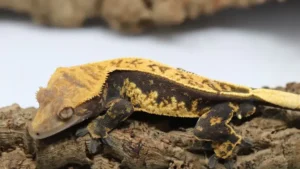


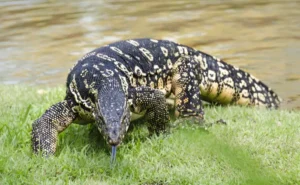

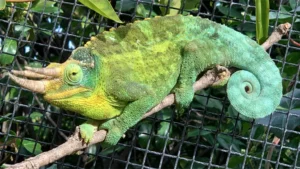
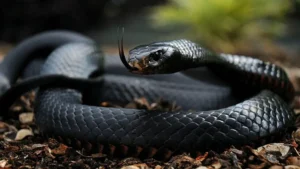


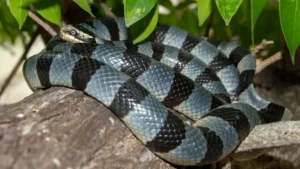


Leave your comment